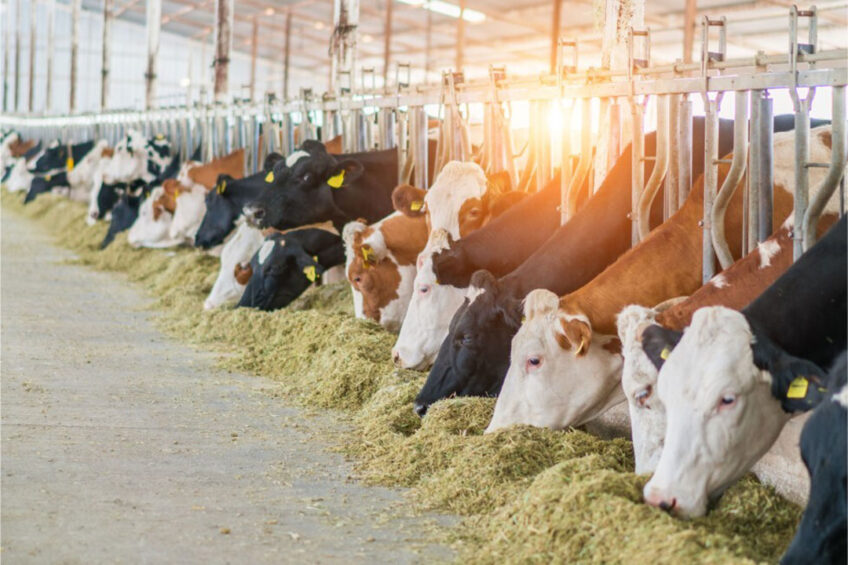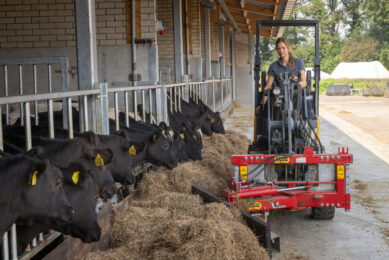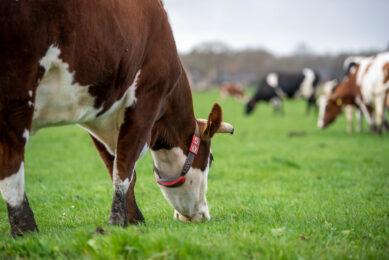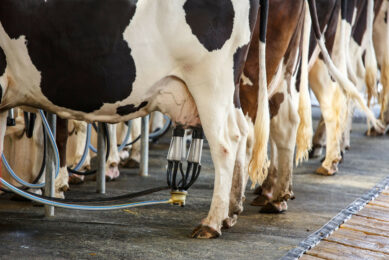Inflation and drought challenge UK dairy farmers

Rocketing inflation that has seen the cost of feed, fertiliser and fuel rise steeply, coupled with problems caused by the summer drought, continues to challenge the UK dairy industry.
Following one of the hottest and driest summers on record, resulting in restricted grass growth and smaller quantities of conserved forage, farmers are struggling to meet demand as production has fallen.
While some producers are getting as much as 50ppl, milk production has consistently been below the level of previous years and forecast production is lower, too, with some farmers concerned about the quantities of silage already fed to their cattle.
Stephen Dark, NFU South West dairy board chairman, said the strength of demand gave producers hope. Speaking at the Dairy Show at Shepton Mallet, Dark said: “There’s a level of demand for the milk we produce that we haven’t experienced for a long while. Milk processors are facing the challenge of protecting the current supply whilst recruiting additional litres.”
Future of dairy
“This current balance of supply and demand gives me confidence for the future of dairy,” he says. “Thankfully, rising costs were acknowledged throughout the dairy industry and a succession of price increases have helped to ease the volatility faced by most producers.”
His comments came as the annual UK Milk Cost of Production Report 2022 was published by farm accountants Old Mill, showing that the common theme between past and present is that an efficient business leads to profit. This is even more crucial when considering high prices, more capital tied up in the business and a greater risk of losses over a short timeframe.
“Milk income in 2021/2 increased by £80/cow, year-on-year”
It shows that average comparable farm profits among its clients increased to £371/cow in the year to 31 March 2022, driven by a combination of slightly firmer milk prices and lower production costs.
Milk income in 2021/2 increased by £80/cow, year-on-year, with the modest price increase offset by lower yields, driven by a desire to reduce production costs. “Good forage growing conditions meant a plentiful supply of high-quality forage, leading to lower concentrate feed rates. The grazing season lasted well into the autumn, shortening the winter housing period. As a result, variable costs related to labour, bedding, power and machinery all fell,” said Dan Heal, rural accountant at Old Mill.
There remained a large difference between the top and bottom 10% of producers with the gap widening by £137 to £1,234/cow. Of this, £541 related to income, and although the top 10% of yields were 1,334 litres/cow lower, income was higher. This shows that meeting buyer requirements reaps rewards, as does reducing concentrate usage when marginal litres are uneconomic.
Production costs were £693/cow lower among the top 10%, mainly due to feed, labour, power and machinery. “There is a high focus on efficiency for the top 10% of herds. In contrast, more work is being done in a less efficient manner among the bottom 10%, which is not generating a return,” added Heal.
Although the top 10% of herds were larger – 287 cows versus 188 cows – there was a variety of systems and calving patterns in both groups, showing that efficiency relies on the farmer, not the system.
The lower yields came from a lower cost base which caused an overall year-on-year fall of £92/cow.
Heal said it was interesting to see the marked differences between prices in March 2022 and now. Milk was averaging 33.8ppl and most fertiliser was bought at under £300/tonne and electricity contracts were in the 20p/unit unit range.
Milk prices are now around 50ppl but fertiliser is nearing £800/tonne and electricity contracts are coming up in the region of 65p/unit.
“Inflation has hit the dairy sector hard over the last 6 months, especially as milk supply is finely balanced. We have seen cost-tracker milk contracts struggle to keep pace with increasing farm gate milk prices to the extent of market price payments, which indicates one thing – milk is scarce.
“Now that the balance of power has turned to the producer, it’s time to focus on building balance sheets to make up for the lean years and build future resilience,” the report added.
Join 13,000+ subscribers
Subscribe to our newsletter to stay updated about all the need-to-know content in the dairy sector, two times a week.










